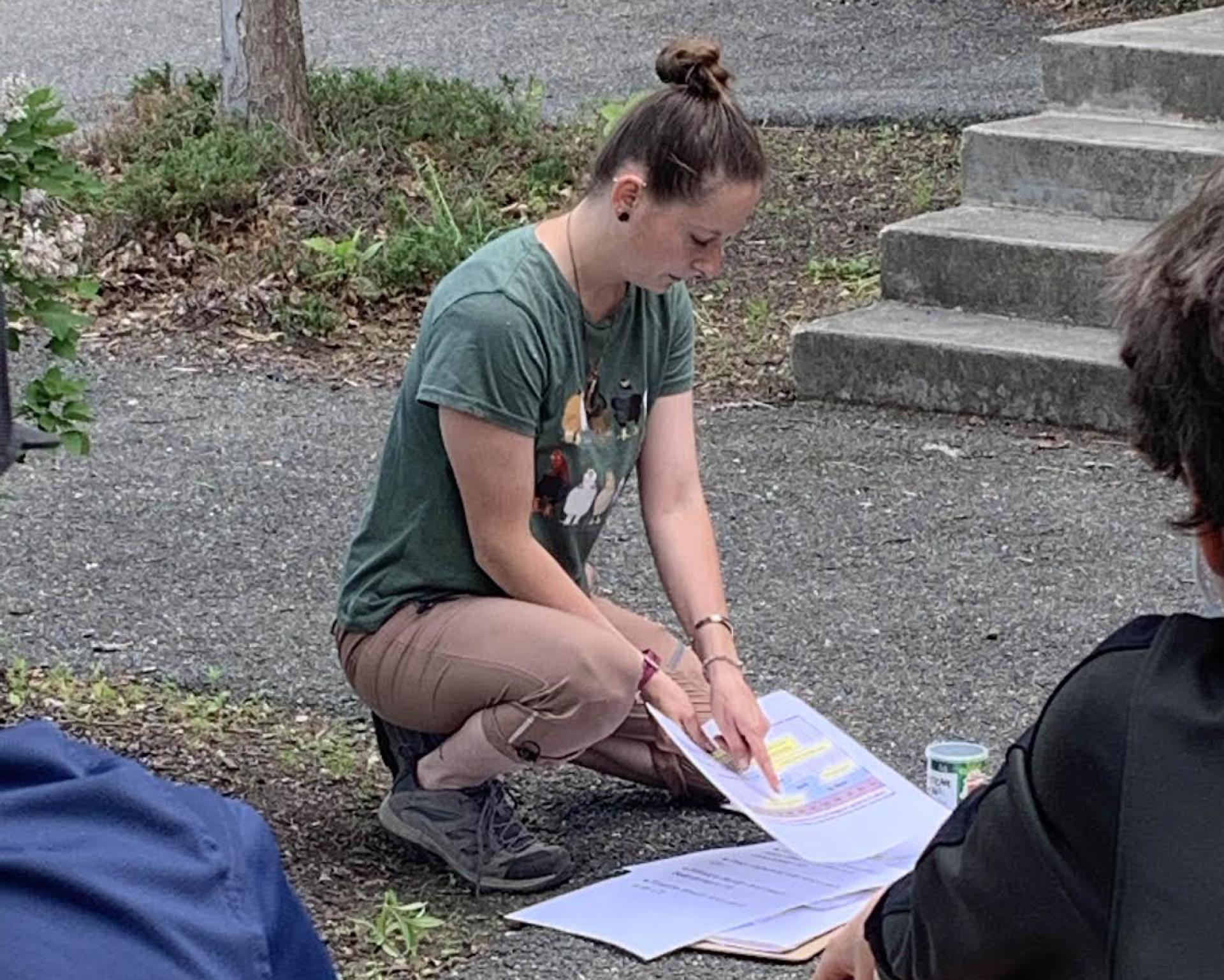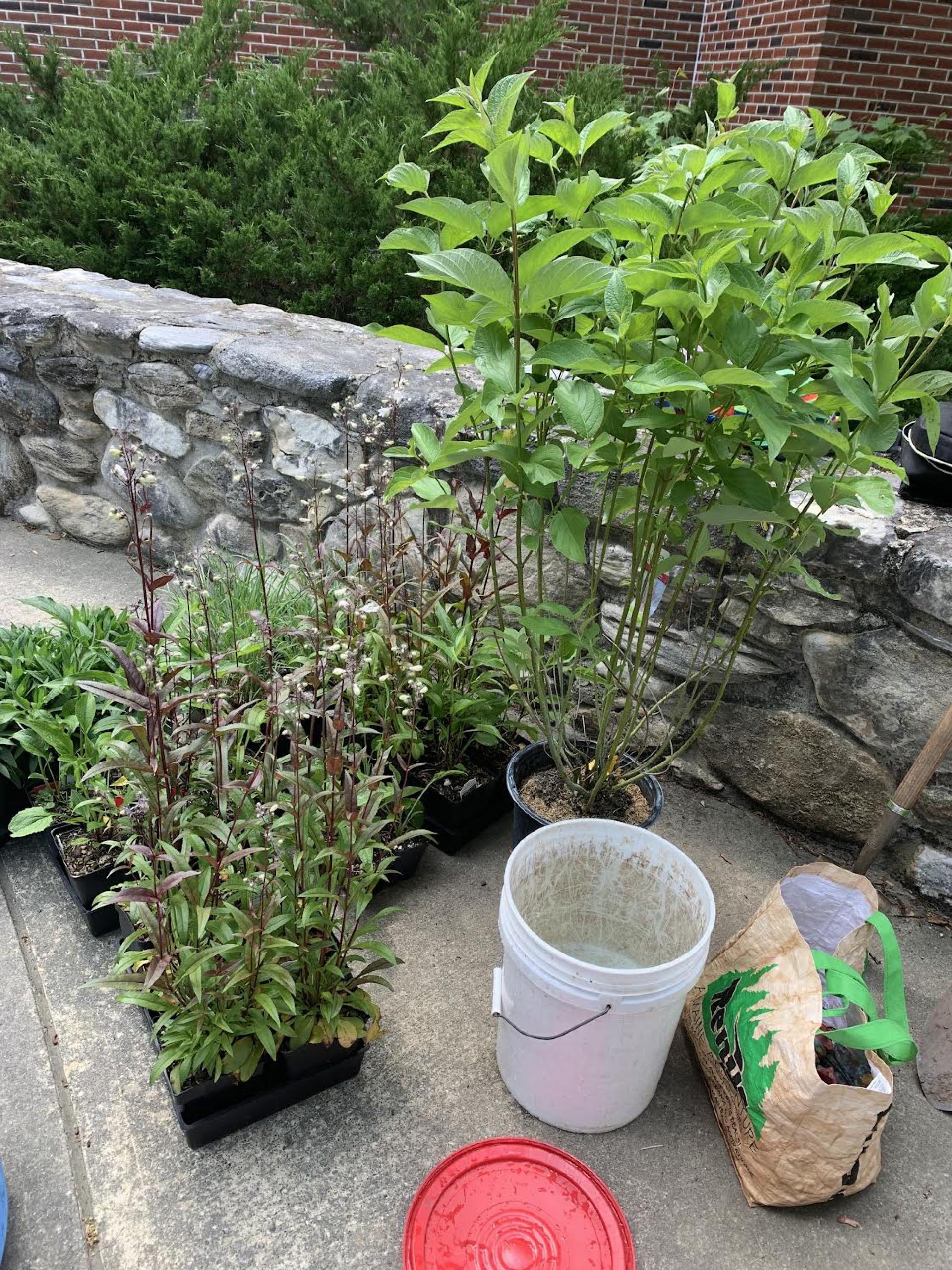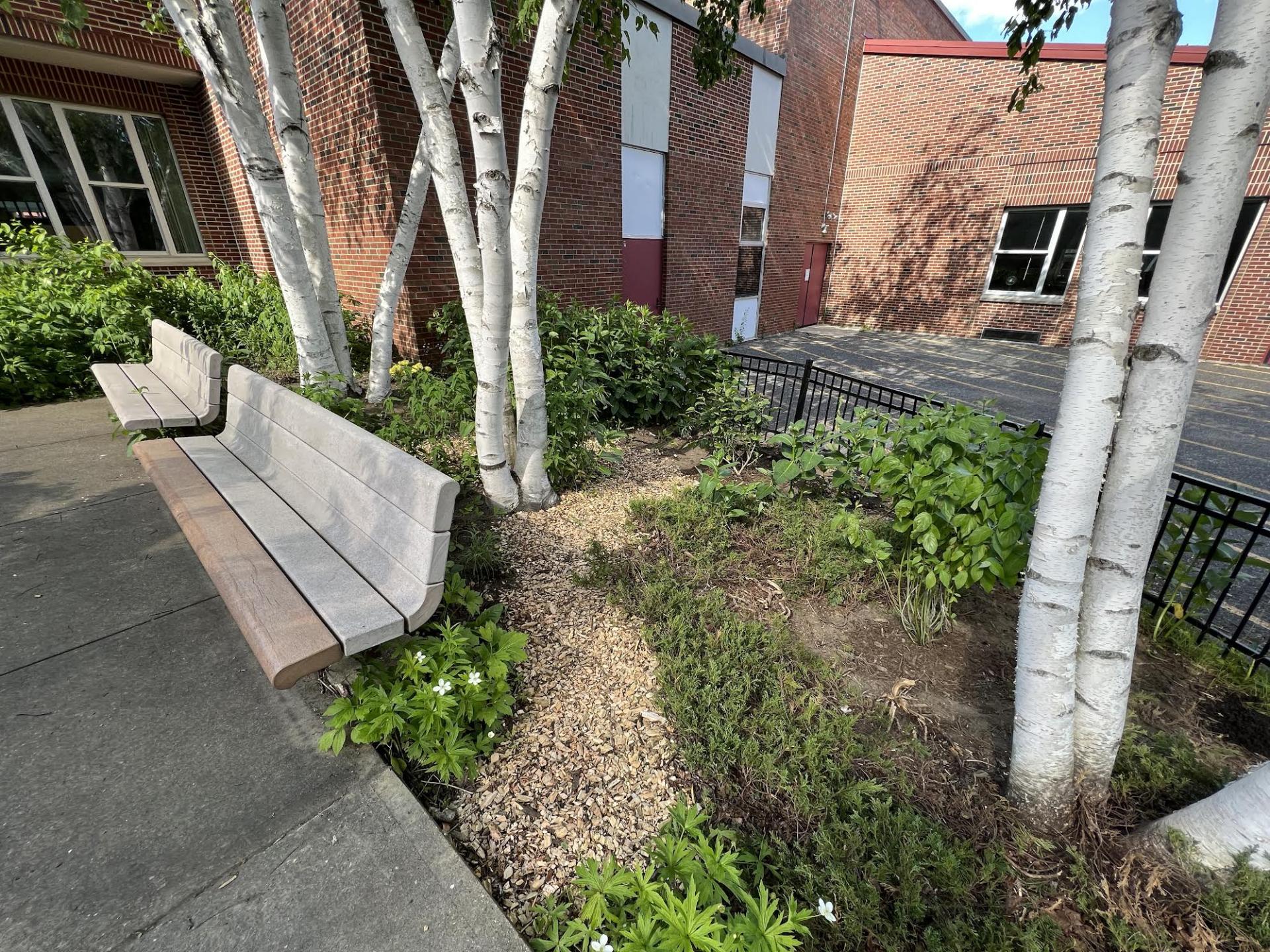You are here
Connection Made, with Each Other and the Earth
Connection Made, with Each Other and the Earth
By Kessa McEwen, EducatIon Coordinator
Fall is a rewarding and energizing time in the garden when the season’s hard work appears in harvests and blooms.
For pollinators, fall is a crucial time. Late-blooming flowers provide essential food sources. As blooms fade, stems and foliage become welcome mats for insects like solitary bees, butterflies and moths looking to over-winter. When we acknowledge the garden as an ever-changing ecosystem, we can work to support nature’s cycles. Mainly, we can nurture the symbiotic relationship between plants and pollinators that has evolved over thousands of years. It’s up to us to acknowledge the importance of nature’s cycles in a pollinator garden ecosystem, allowing plants and pollinators to interact symbiotically as they have evolved to do.
For six weeks last spring, students from Lenox Memorial Middle and High School strived to do just that. They met weekly to work alongside educators from BBG and learn about native plants and pollinators and the critical role the two play in our ecosystem. Their project was to redesign the school’s “Reading Park,” a courtyard garden alongside the library. Their goal was to increase biodiversity, remove invasives and create a welcoming space. Students spent time assessing sun and shade areas in the space. Then, they removed invasives. After preparing the soil for planting, they helped determine plant placement based on what they had learned. Working collaboratively, they planted over 95 plants in the ground. In the process, they connected with each other and the earth. This project reached beyond the library and BBG. Under the instruction of Heather McNiece, a teacher in the school’s business department, students in a marketing class were challenged to design flyers for the program. They selected a favorite and posted copies around the school. This cross-department collaboration increased the amount of students connected to, and learning from, this wonderful project. The seeds for the project were planted in 2019 when the schools’ librarian, Alexis Kennedy, worked with BBG staff to apply for a LEEF grant to improve the space. After nearly two and a half years, it finally came to fruition.
“The best part of the school day this spring was working after school in the garden with Kessa and our students,” Alexis said. “These sorts of hands-on, community-building projects are precisely what are needed at this moment in education, now more than ever. Students would chatter and banter with each other as they planted, leaned heavily into shovels and troubleshooted how to eradicate a weed. ‘Another burdock,’ they’d exclaim, as they reached for their hori horis and began to attack the offender. Kessa McEwen [BBG’s education coordinator] is a superior educator who empowered the students to use tools appropriately, decide where to plant items and reflect upon the impact their actions would have long-term on their environment. I am so grateful for our collaboration with BBG, as true education lies in trusting students to be thoughtful and to make informed decisions on their own; a clear hallmark of Kessa’s training. The real beauty lies in stepping back as an educator and watching what students create.”
This project tripled the number of native plant species in the “Reading Park.” Native plant species were chosen as opposed to cultivars, due to the increasing evidence these plants provide the highest nutrient value to native pollinators. These plantings should help to increase biodiversity of native pollinators that will find both food and habitat in the garden. Over the course of the year, early bloomers like Virginia strawberry and Solomon’s seal will give way to purple coneflower, red-osier dogwood and mountain mint. Later in the season, showy goldenrod and New England aster will make their appearance with shades of yellow and purple. Witch hazel, a host species to 68 species of butterflies and moths, will bloom in October and November, providing food for pollinators until temperatures have reached well below freezing. The hard work and persistence of the Lenox students made this garden possible. They displayed problem-solving skills, creativity and teamwork, all of which culminated in a native pollinator garden that will bloom for years to come. Our youth programs are designed to foster these skills and a connection to the community and natural world.
This project was generously funded by a LEEF grant (Lenox Environmental Education Fund).
Help Our Garden Grow!
Your donation helps us to educate and inspire visitors of all ages on the art and science of gardening and the preservation of our environment.
All Donations are 100 percent tax deductible.






